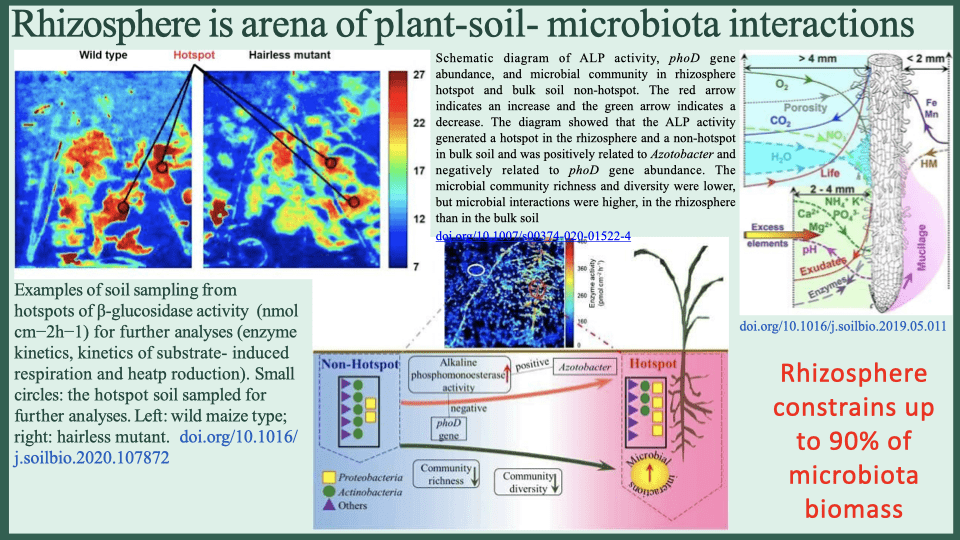The Mechanism of Humic Substances Functioning at Level of Soil Microparticles

In the course of AEU Club Workshop on Humic Substances as nature-based solutions for sustainable agriculture, Natalia Shchegolkova and Konstantin Romanenko delivered a presentation on the mechanism of the functioning of such substances.
The source of organic matter in the soil is terrestrial and underground plant residues, as well as root muscilage and microorganisms’ metabolites. With their further processing by microorganisms, specific soil organic matter (humus) is being formed
Humus is a mixture of different types of substances – humic acids (more massive molecules) and fulvic acids (lighter and more mobile molecules). Fulvic acids dissolve better in water and can be leeched from the soil, they are also faster processed by microorganisms, while humic acids are better fixing in the soil.
Formation of humus is better in the conditions of northern forests and dry steppes, where there are many plant residues from trees and herbaceous vegetation at an average intensity of microbiological activity. Plant residues do not have time to decompose to CO2 by microorganisms and are stored in the soil. The process of formation and accumulation of humic substances under these conditions takes hundreds and thousands of years. Plant residues mineralize quickly in a humid tropical climate, so humic substances are not stored in the soil.
One of the most important properties of humic substances is the number and diversity of functional groups in the molecular structure. This property triggers the formation of a functional microbiological community, since humic substances are the arena of biochemical interactions.
The benefits of using humic substances are expressed in:
• stimulation of soil microbiological activity,
• initiation of nitrogen fixation, ammonification,
• conversion of nutrient substances into accessible forms,
• stimulation of self-purification of soils and bottom sediments from hazardous pollutants,
• selection of a “useful” microbiological community in the soil and in the gastrointestinal tract of animals and humans (GIT),
• stimulation of seed germination, increase of plant immunity.
Humic substances stimulate the vital activity of the microbiota, which stimulates the vital activity of plants, which, in turn, stimulates the vital activity of the microbiota. Humic substances initiate self-developing biogeochemical processes.

In terms of microbiological activity, the most important part in the soil-plant-microbiota system is the rhizosphere – the zone of root influence on the soil. Up to 90% of the microbiota mass is concentrated in the rhizosphere. The use of humic substances is aimed specifically at microorganisms in the rhizosphere.
Also, organic matter changes the physical properties of the soil. Massive molecules of organic matter bind to mineral particles, forming soil aggregates and strengthening the structure. The strong aggregate structure resists mechanical impact on the soil and also resists water and wind erosion. A favorable aggregate agronomically valuable structure has improved water properties: it stores water necessary for the growth and development of plants (and bacteria) and removes its excess, forming an optimal water-air balance.
Summing it up, the formation of humic substances is a long process that requires certain conditions. The use of humic substances (preparations) allows us to start the necessary processes in the soil and optimize its properties, bypassing the long process of formation of humic substances and removing restrictions on their formation in the soil.
